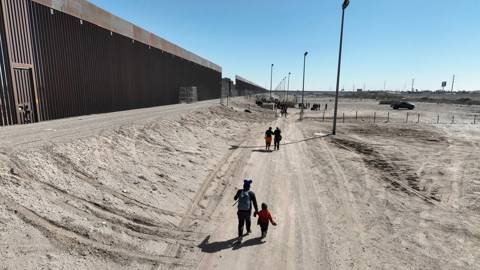Every year, we waste or lose 1.3 billion metric tons of food – one-third of the world’s annual food production. The figure is all the more unfathomable, given that, alongside this massive wastage and loss, 840 million people experience chronic hunger on a daily basis.
ROME – Every year, we waste or lose 1.3 billion metric tons of food – one-third of the world’s annual food production. The sheer scale of the number makes it almost impossible to grasp, no matter how one approaches it. Try to imagine 143,000 Eiffel Towers stacked one on top of another, or a pile of 10 trillion bananas.
The figure is all the more unfathomable, given that, alongside this massive wastage and loss, 840 million people experience chronic hunger on a daily basis. Many millions more suffer from “silent hunger” – malnutrition and micronutrient deficiencies.
For the more economically minded, here is another number: food wastage and loss, expressed in producer prices, costs roughly $750 billion per year. If we were to consider retail prices and the wider impacts on the environment, including climate change, the figure would be much higher.
In an era of austerity, it is difficult to understand how such a massive hemorrhage of resources could be neglected. In fact, in some places, the volume of food wastage is rising.
Now a new report by the United Nations Food and Agriculture Organization focuses on another troubling aspect of the problem: the negative consequences for the environment and the natural resources on which we rely for our survival.
When food is lost or wasted, the energy, land, and water resources that went into producing it are squandered as well. At the same time, large amounts of greenhouse gases are released into the atmosphere during production, processing, and cooking.
From any perspective – ethical, economic, environmental, or in terms of food security – we simply cannot tolerate the annual wastage of 1.3 billion tons of food. This is why serious reduction of food loss and wastage is one of the five elements of UN Secretary General Ban Ki-moon’s “Zero Hunger Challenge” and a major focus of the UN High Level Task Force on Global Food Security. We are working together within the UN system and with a broad coalition of other partners to ensure universal access to adequate food all year round; eliminate childhood stunting; make all food systems sustainable; and eradicate rural poverty.
Next week, the Global Green Growth Forum in Copenhagen will allow for a deeper look at this issue. There is much that can be done. For starters, food loss and wastage needs to be seen as a cross-cutting policy issue, rather than a lifestyle choice to be left in the hands of individual consumers and their consciences. The world needs to wake up to the need for policies that address all stages of the food chain, from production to consumption.
Food loss – on farms, during processing, transport, and at markets – undermines food security in most developing countries, where post-harvest losses can reach as high as 40% of production. Investment in infrastructure for transport, storage, and marketing of food is badly needed, as are programs to train farmers in best practices.
In developed countries, food-retailing practices require a rethink. For example, rejection of food products on the basis of aesthetic concerns is a major cause of wastage. Some supermarkets have already begun relaxing standards on fruit appearance, selling “misshapen” items at reduced prices and helping to raise awareness that ugly does not mean bad. More approaches like this – and concerted efforts to find markets or uses for surplus food – are needed.
Businesses and households alike should monitor where and how they waste food and take corrective steps, because prevention of wastage is even more important than recycling or composting.
Yes, 1.3 billion tons is a mindboggling figure. But these simple steps are easy enough to grasp – and within reach for everyone. The world confronts many seemingly intractable problems; food wastage is one issue that we all can do something about now.









ROME – Every year, we waste or lose 1.3 billion metric tons of food – one-third of the world’s annual food production. The sheer scale of the number makes it almost impossible to grasp, no matter how one approaches it. Try to imagine 143,000 Eiffel Towers stacked one on top of another, or a pile of 10 trillion bananas.
The figure is all the more unfathomable, given that, alongside this massive wastage and loss, 840 million people experience chronic hunger on a daily basis. Many millions more suffer from “silent hunger” – malnutrition and micronutrient deficiencies.
For the more economically minded, here is another number: food wastage and loss, expressed in producer prices, costs roughly $750 billion per year. If we were to consider retail prices and the wider impacts on the environment, including climate change, the figure would be much higher.
In an era of austerity, it is difficult to understand how such a massive hemorrhage of resources could be neglected. In fact, in some places, the volume of food wastage is rising.
Now a new report by the United Nations Food and Agriculture Organization focuses on another troubling aspect of the problem: the negative consequences for the environment and the natural resources on which we rely for our survival.
When food is lost or wasted, the energy, land, and water resources that went into producing it are squandered as well. At the same time, large amounts of greenhouse gases are released into the atmosphere during production, processing, and cooking.
SUMMER SALE: Save 40% on all new Digital or Digital Plus subscriptions
Subscribe now to gain greater access to Project Syndicate – including every commentary and our entire On Point suite of subscriber-exclusive content – starting at just $49.99
Subscribe Now
From any perspective – ethical, economic, environmental, or in terms of food security – we simply cannot tolerate the annual wastage of 1.3 billion tons of food. This is why serious reduction of food loss and wastage is one of the five elements of UN Secretary General Ban Ki-moon’s “Zero Hunger Challenge” and a major focus of the UN High Level Task Force on Global Food Security. We are working together within the UN system and with a broad coalition of other partners to ensure universal access to adequate food all year round; eliminate childhood stunting; make all food systems sustainable; and eradicate rural poverty.
Next week, the Global Green Growth Forum in Copenhagen will allow for a deeper look at this issue. There is much that can be done. For starters, food loss and wastage needs to be seen as a cross-cutting policy issue, rather than a lifestyle choice to be left in the hands of individual consumers and their consciences. The world needs to wake up to the need for policies that address all stages of the food chain, from production to consumption.
Food loss – on farms, during processing, transport, and at markets – undermines food security in most developing countries, where post-harvest losses can reach as high as 40% of production. Investment in infrastructure for transport, storage, and marketing of food is badly needed, as are programs to train farmers in best practices.
In developed countries, food-retailing practices require a rethink. For example, rejection of food products on the basis of aesthetic concerns is a major cause of wastage. Some supermarkets have already begun relaxing standards on fruit appearance, selling “misshapen” items at reduced prices and helping to raise awareness that ugly does not mean bad. More approaches like this – and concerted efforts to find markets or uses for surplus food – are needed.
Businesses and households alike should monitor where and how they waste food and take corrective steps, because prevention of wastage is even more important than recycling or composting.
Yes, 1.3 billion tons is a mindboggling figure. But these simple steps are easy enough to grasp – and within reach for everyone. The world confronts many seemingly intractable problems; food wastage is one issue that we all can do something about now.